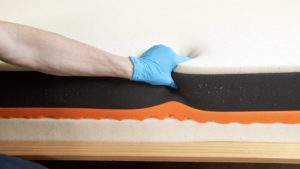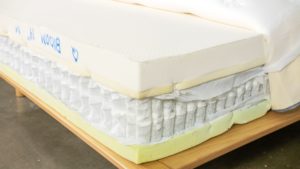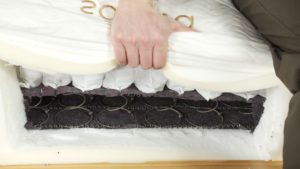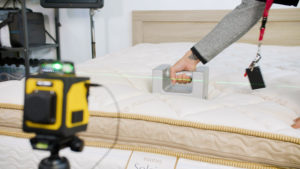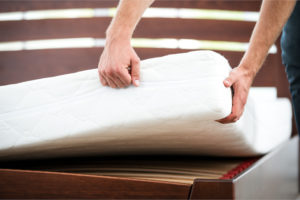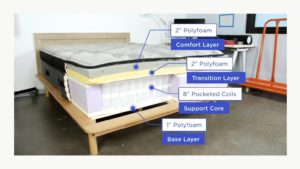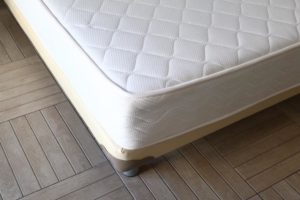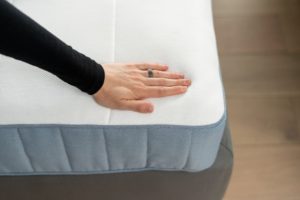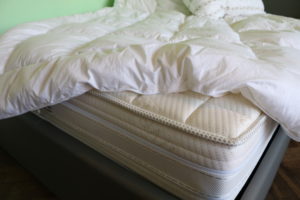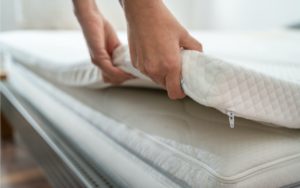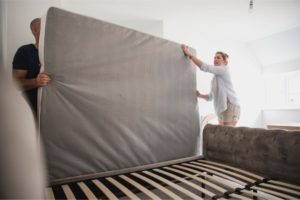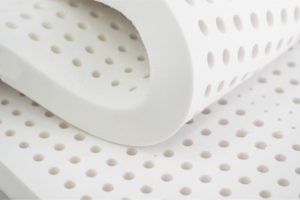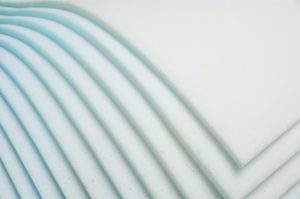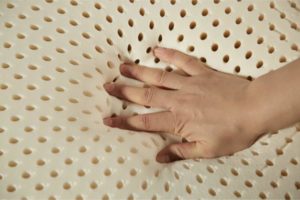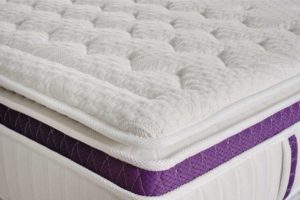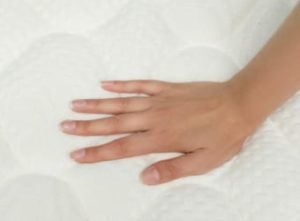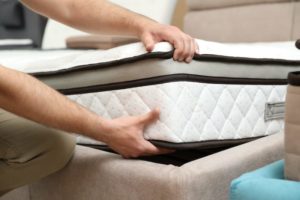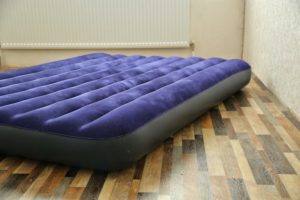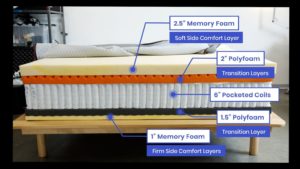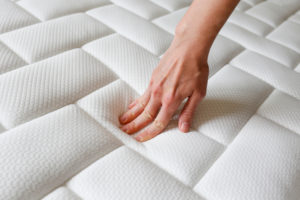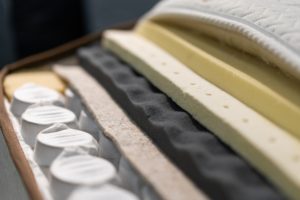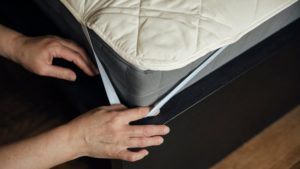When you buy through our links, we may earn a commission. Products or services may be offered by an affiliated entity. Learn more.
How Is Latex Density Measured?
Latex has become a popular material in high-end mattresses. Many consumers prefer latex because of its durability, sustainability, and balance of responsiveness and conforming. When shopping for a latex mattress, the density of the latex layer(s) is an important factor to consider.
The density of each latex layer will influence the bed’s overall performance. It can also impact durability and temperature regulation, as well as the cost of the mattress. In the guide below, we will explore how latex density is measured, and what these figures actually mean for mattress shoppers.
Let us help you find the perfect bed
Answer a few questions to find the right mattress for your unique needs
How Is Latex Density Measured?
Density is a measurement of weight per unit of volume. For foam materials like the latex used in mattresses, density is expressed in pounds per cubic foot (PCF). The density of a foam material is calculated by measuring the weight of a single cubic foot of foam.
For example, consider a latex foam layer weighing in at 100 pounds, and measuring 20 cubic feet in total. To calculate this layer’s density, we must simply divide the total weight by the total cubic feet (100 divided by 20). In this example, the foam would have a density of 5 pounds per cubic feet (5 PCF).
Mattress manufacturers will typically list all the materials they use, as well as the listed density measurements (in PCF). Sometimes you will need to dig to find this information, but it’s generally listed somewhere on the manufacturer’s website.
What is considered high density latex, or low density latex? The table below lists some common density ranges for latex foam, and compares these stats to the density ranges of both memory foam and polyfoam.
| Material | Low-Density | Medium-Density | High-Density |
|---|---|---|---|
| Latex | Less than 4.3 PCF | 4.3 to 5.3 PCF | More than 5.3 PCF |
| Memory Foam | Less than 3 PCF | 3 to 5 PCF | More than 5 PCF |
| Polyfoam | Less than 1.5 PCF | 1.5 to 1.7 PCF | More than 1.7 PCF |
As you can see, latex foam is generally made with a higher density than competing materials like polyfoam and memory foam. Each foam material has substantially different properties, which make the ideal density for each material different. This disconnect can unfortunately make it confusing to compare density statistics on multiple products. For this reason, it’s important to double-check the type of foam being used, in addition to the listed density rating.
What Does Latex Density Mean?
We’ve covered how density is calculated, but what do these numbers actually mean – and why do they matter?
The density of a given foam will significantly impact how it feels and performs. Higher-density foams can withstand more pressure, and are generally more durable. Lower-density foams are often better suited for cushy comfort layers, but generally need the firmer support of a high-density layer underneath.
Most modern mattresses are made with multiple layers of foam, each with a distinct density. A mix of materials are often used, as well. A single mattress could have two to five distinct layers, and could utilize latex, memory foam, polyfoam, or a mix of all three.
The density of a given foam influences its price, with denser foams typically being more expensive. Durability, motion isolation, responsiveness and other factors are all affected by a foam’s density rating. The section below goes into more detail on how latex density affects various mattress performance factors.
How Latex Density Affects Performance
Durability
The higher a material’s density rating, the more durable it will typically be. Of course, latex in general is considered highly durable, so even low-density latex foams may outlast memory foam and other mattress materials.
Conforming/Pressure Relief
High-density foam offers relatively close, consistent conforming, while lower density materials tend to sink in without closely conforming to the exact shape of the sleeper’s body. Regardless of density, latex conforms just moderately.
Temperature Neutrality
Higher-density latex tends to trap more body heat, as there is less airflow. That being said, latex is generally more breathable than other foams, regardless of density.
Pressure Relief
Pressure relief performance is closely related to conforming, so we see similar results in this category. Higher-density latex tends to outperform lower-density latex, as it offers better conforming.
Sex
Lower-density latex tends to score better as a surface for sex. It’s more responsive, and traps less body heat, compared to high-density latex. Latex is generally responsive however, and shouldn’t ever be lacking in this department.
Mattress Weight
Lower-density latex weighs less than its high-density counterpart. Of course, keep in mind that latex is a much heavier material than most other foams used in mattresses. A latex mattress will likely weigh between 90 and 125+ lbs.
Cost
Generally speaking, the higher the density rating, the more expensive the material is to produce. However, high-density foams are also more durable, so the long-term cost may be similar. Keep in mind that latex is a pricey material in general, with high-quality latex beds generally priced at $1,000 to $2,000 or more.
Latex Density and Mattress Firmness
Density and firmness are related factors, but they are not the same thing. While some manufacturers tend to use them interchangeably, the reality is that they are two distinct factors.
Density measurements refer to specific components of a mattress. Firmness ratings, on the other hand, refer to the feel of the entire mattress.
The overall firmness and feel of a mattress is a product of the entire composition of the bed. Most modern mattresses feature multiple distinct layers, each with their own material and density. Thus, a firm mattress could have a layer of high-density latex foam, a layer of low-density memory foam, and even a layer of metal coils.
Density is a technical specification that’s easily calculated using dimensions and weight statistics. On the other hand, firmness is a relatively subjective measurement. Firmness is typically represented on a scale of 1 to 10, with 10 being the firmness. However, there is no universal firmness scale, so these numbers are best thought of as a general guideline.

Still have questions? Ask our community!
Join our Sleep Care Community — a trusted hub of sleep health professionals, product specialists, and people just like you. Whether you need expert sleep advice for your insomnia or you’re searching for the perfect mattress, we’ve got you covered. Get personalized guidance from the experts who know sleep best.

